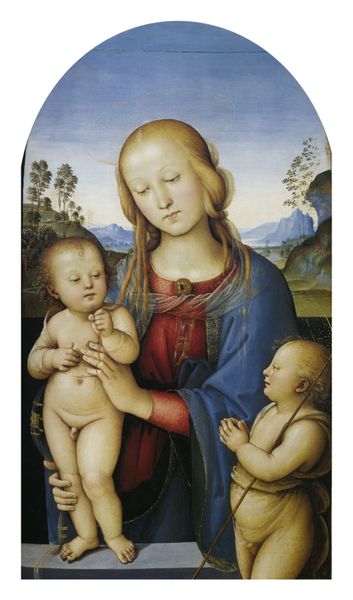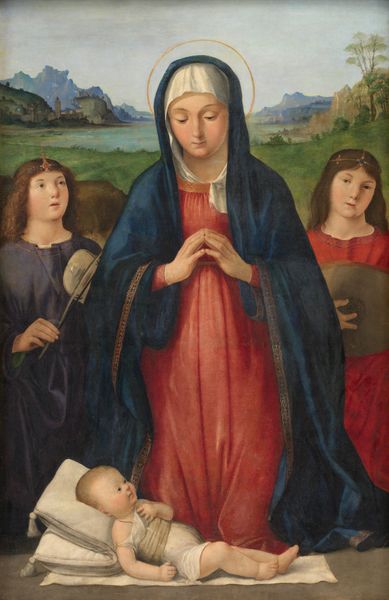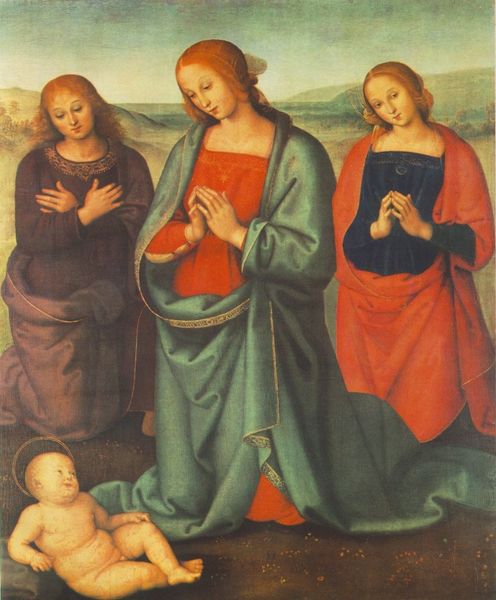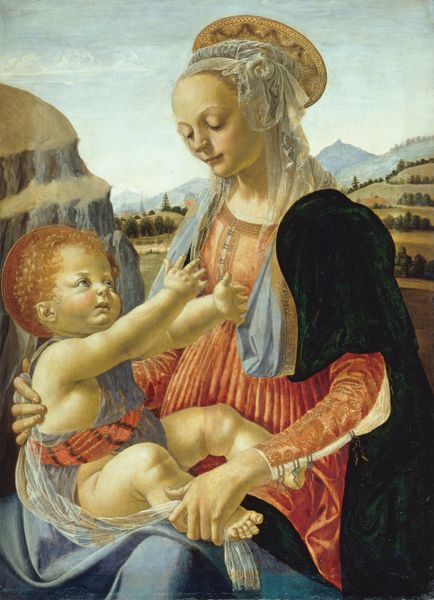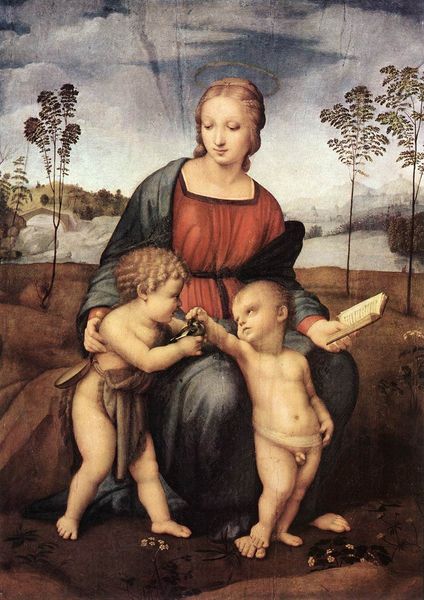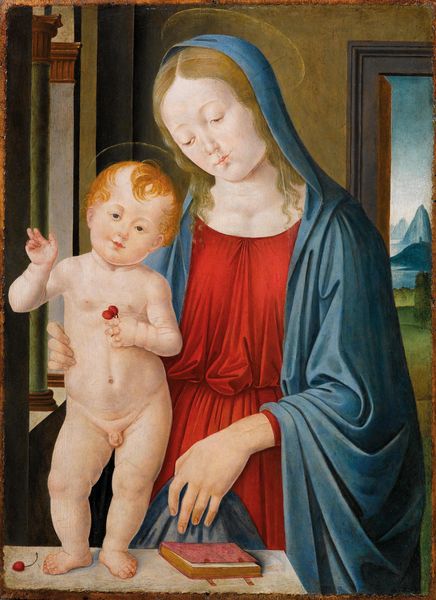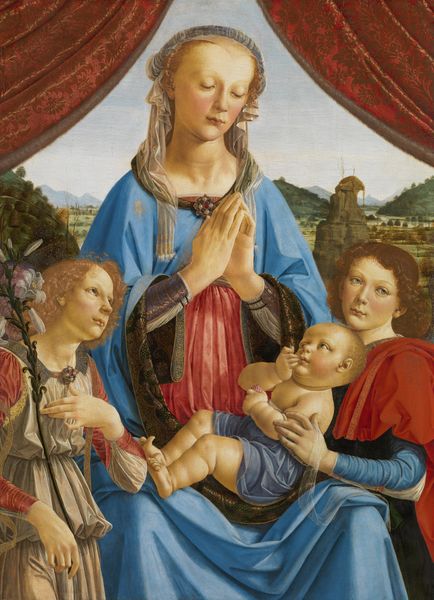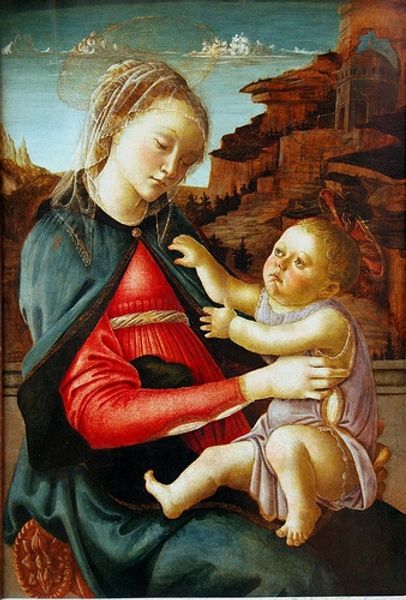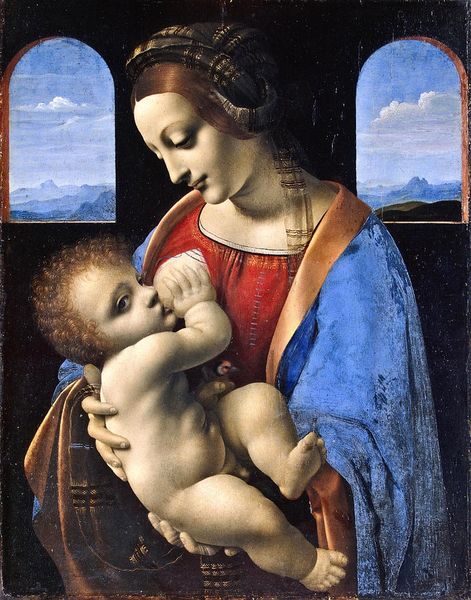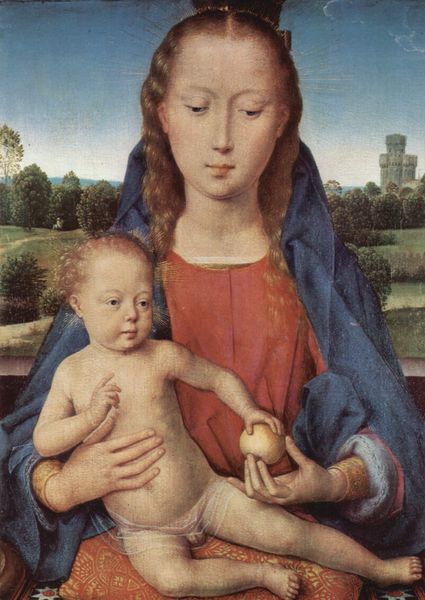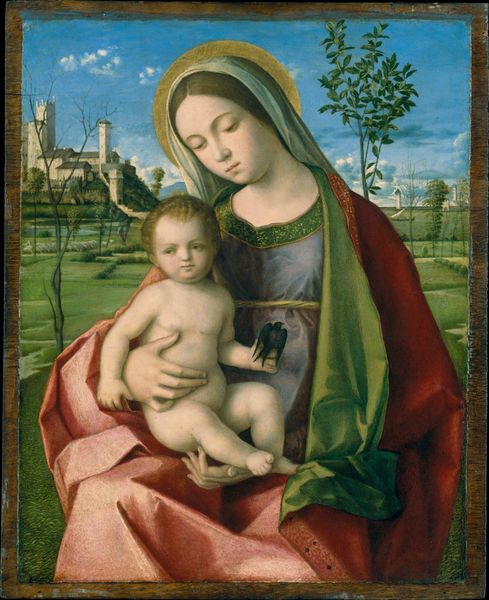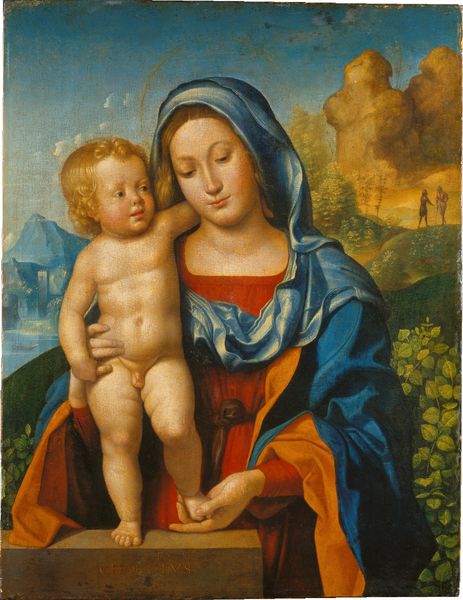
painting, oil-paint
#
portrait
#
high-renaissance
#
narrative-art
#
painting
#
oil-paint
#
landscape
#
figuration
#
11_renaissance
#
oil painting
#
christianity
#
italian-renaissance
#
angel
Dimensions: 127 x 64 cm
Copyright: Public domain
Editor: Here we have Perugino's "The Virgin and Child with an Angel", created around 1499. It’s an oil painting, and there's such a sense of serene stillness. What I find fascinating is the division of space; angels float above, while Mary and the child occupy the earthly realm below. What strikes you about it? Curator: What stands out to me is less the division and more the interplay of power. Consider the commissioning context. Religious art in the late 15th century wasn't merely devotional. It served a critical socio-political function. The display of wealth and piety was very calculated. Editor: Calculated? So, it's not just a sincere expression of religious belief? Curator: Sincerity is difficult to gauge across centuries. Instead, look at the very clear idealization of the Virgin and the infant Christ – that idealized beauty reinforces the power of the Church and its teachings. Note the detailed landscape as well, that evokes wealth. Ask yourself, what kind of audience was this intended for and what messages were being reinforced by such works? Editor: So, the harmony and balance—classic Renaissance features—were used strategically? To project an image of stability, perhaps? Curator: Exactly. And how does the prominent display location within a church affect the everyday experience and behaviours of those that viewed this art? Think about it! What better way to remind people of their place in society? Editor: I never considered how something beautiful could also be a tool for social control. This piece seems far more complex than just a depiction of the Virgin Mary! Thanks! Curator: My pleasure! It's crucial to always contextualize art within its time.
Comments
No comments
Be the first to comment and join the conversation on the ultimate creative platform.
